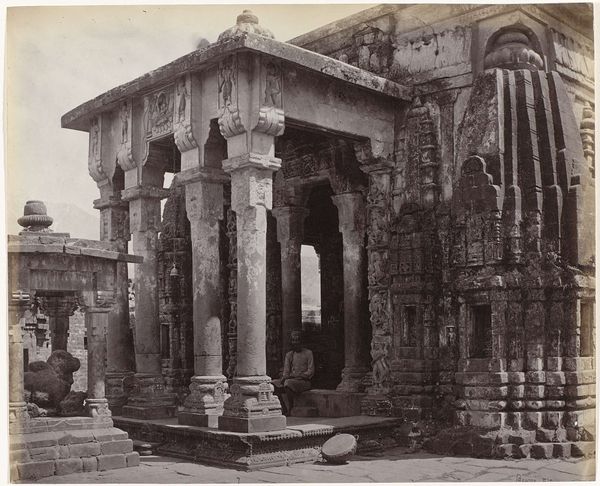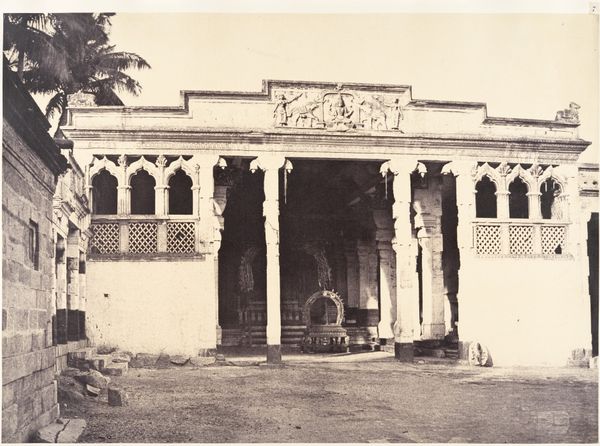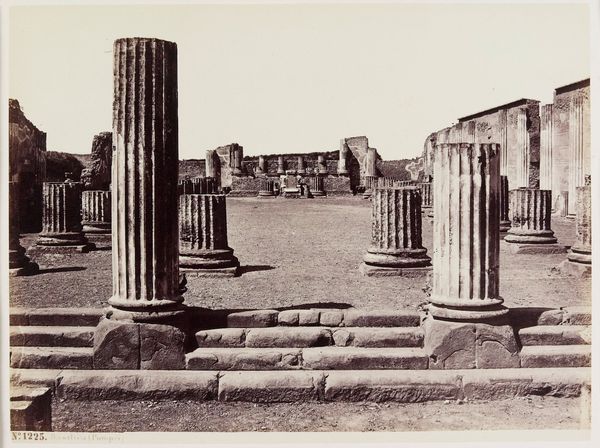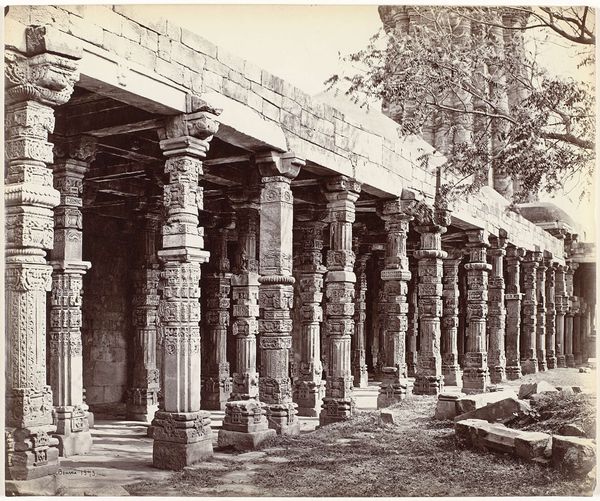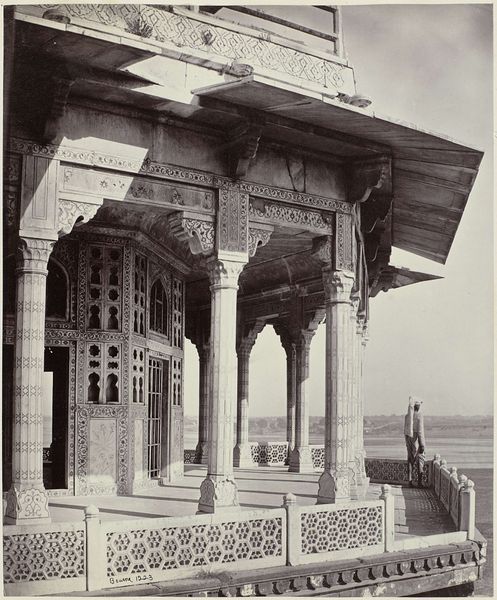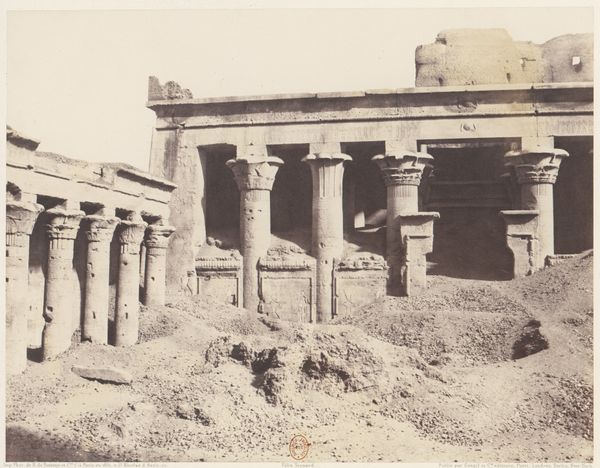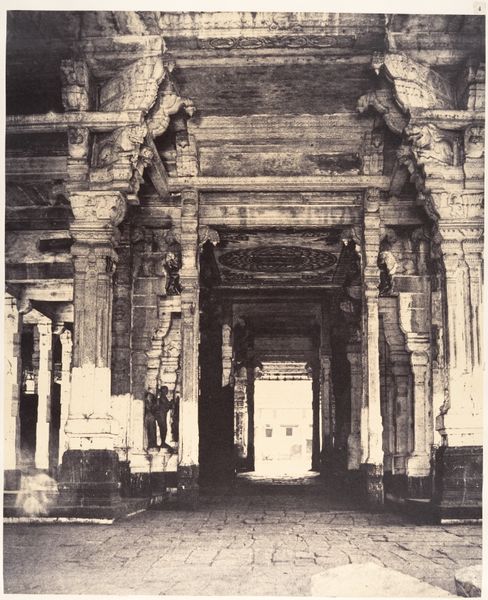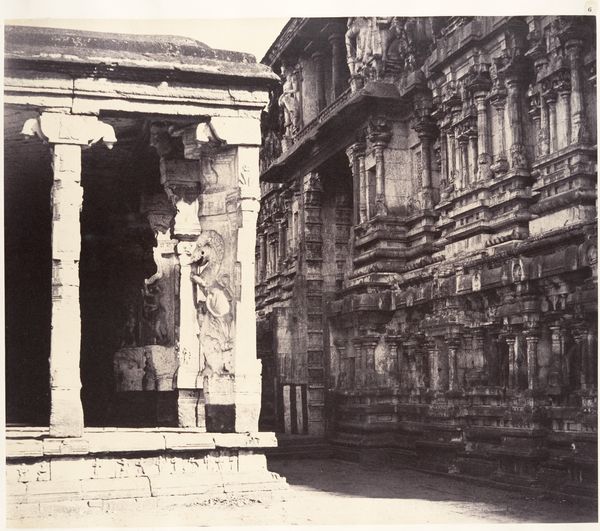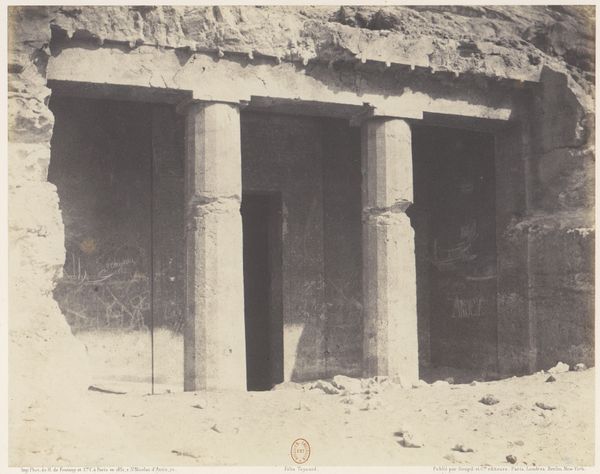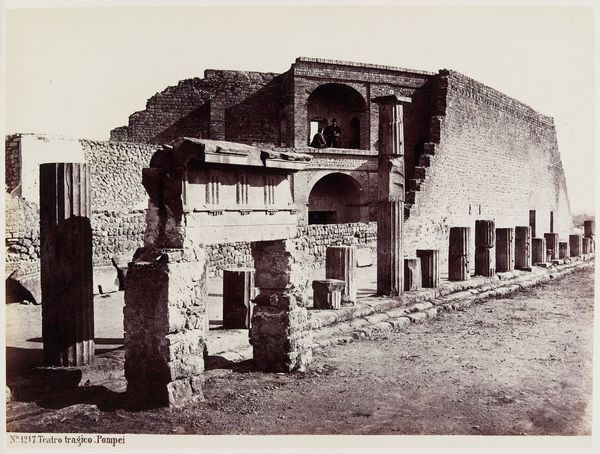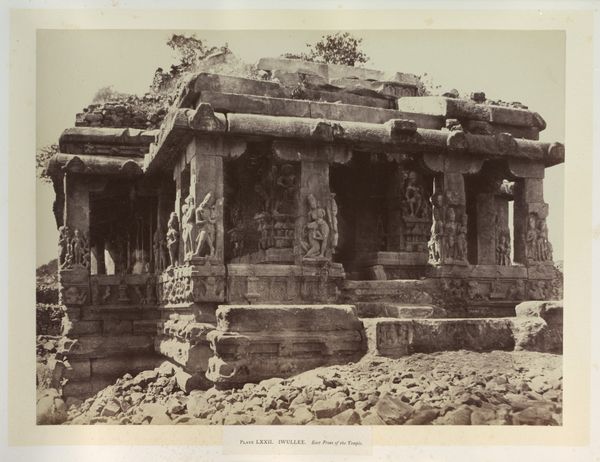
photography, albumen-print, architecture
#
portrait
#
landscape
#
photography
#
ancient-mediterranean
#
albumen-print
#
architecture
Dimensions: Image: 24 x 36.8 cm (9 7/16 x 14 1/2 in.) Mount: 45 x 57.1 cm (17 11/16 x 22 1/2 in.)
Copyright: Public Domain
Linnaeus Tripe captured this mesmerizing photograph of the Tatta Suddhi Mundapam, with the collodion process on paper. Note the columns that form the structure's support. Columns have historically been used as symbolic supports in temples and sacred spaces, representing not just physical stability, but the pillars of faith, knowledge, and cosmic order. This motif echoes across cultures, from the pillars of ancient Egyptian temples to the columns supporting Renaissance cathedrals. Consider the lion sculptures atop the structure; these represent power and protection, a symbol deeply rooted in various cultures, dating back to ancient Mesopotamia. The lion's image transcends geographical boundaries, reappearing as guardians in Chinese art and heraldic symbols in Europe. Its continued presence in diverse cultural contexts reveals a primal, universal recognition of its potency. Such symbolic motifs are not linear; rather, they resurface, evolve, and take on new meanings depending on time. These elements offer us a glimpse into the intricate web of cultural memory, where symbols connect distant times and places through collective, subconscious understanding.
Comments
No comments
Be the first to comment and join the conversation on the ultimate creative platform.
